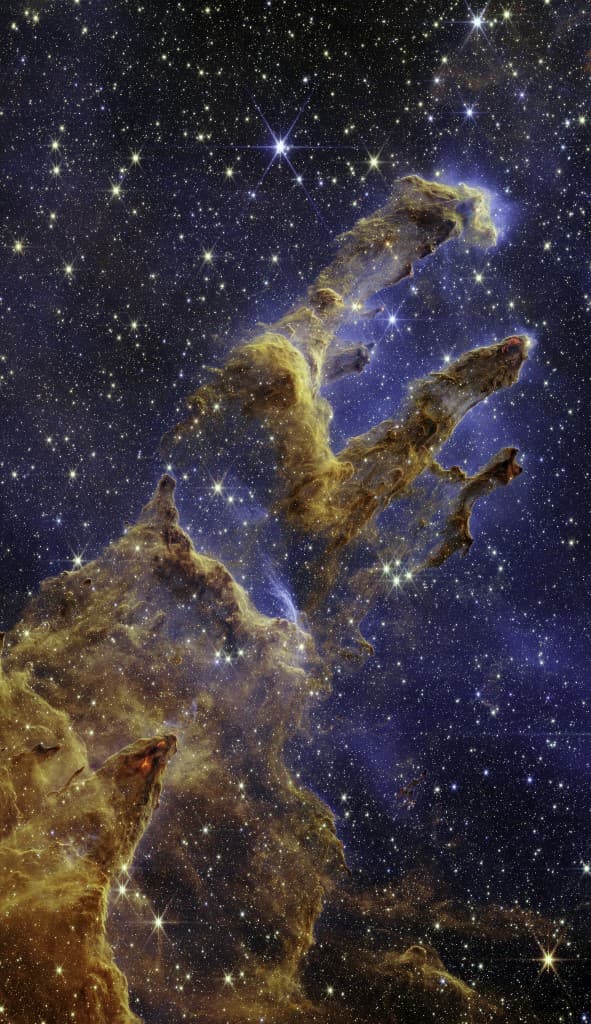This is the image that many expected, as majestic as expected. The James Webb Telescope on Wednesday revealed its first view of the iconic “Pillars of Creation,” huge structures of gas and dust teeming with forming stars.
The twinkling of thousands of stars illuminates the entire image, above which these gigantic brown and orange columns rise in the immensity of the cosmos.

Deep red areas at the end of several of the pillars evoke lava. These are “ejections of stars still in the process of development”, only a few hundred thousand years old, NASA explained in a press release. These “young stars periodically launch supersonic jets that collide with clouds of matter, like these thick pillars.”
6500 light years away
The “Pillars of Creation” are located 6500 light years from Earth, in our galaxy, the Milky Way. Specifically, they are found in the Eagle Nebula.
They were made famous by the Hubble Space Telescope, which took a first snapshot of them in 1995 and revisited them in 2014.
But thanks to its infrared capabilities, the James Webb Telescope, launched into space less than a year ago, can pierce the opacity of the pillars, revealing many new stars in formation, the bright red balls.
“By popular demand, we had to do the Pillars of Creation” with James Webb, Klaus Pontoppidan, science program manager at the Space Telescope Science Institute, which operates the telescope out of Baltimore, tweeted Wednesday.
“There are so many stars!” he continued.
“The Universe is beautiful!” exclaimed NASA astrophysicist Amber Straughn.
Studying the life cycle of stars.
This image, which covers an area of about eight light-years, was taken by the NIRCam instrument, which operates in the near-infrared, that is, a wavelength invisible to the human eye. The colors of the image have thus been “translated” into visible light.
According to NASA, this new image “will help researchers revise their models of star formation, identifying a much more accurate count of newly formed stars, as well as the amount of gas and dust in this region.”
James Webb, whose first color images were released in July, is making his observations 1.5 million kilometers from Earth.
One of the main purposes of this $10 billion telescope is to study the life cycle of stars. Another main line of research is the study of exoplanets, that is, planets outside the solar system.
Source: BFM TV

